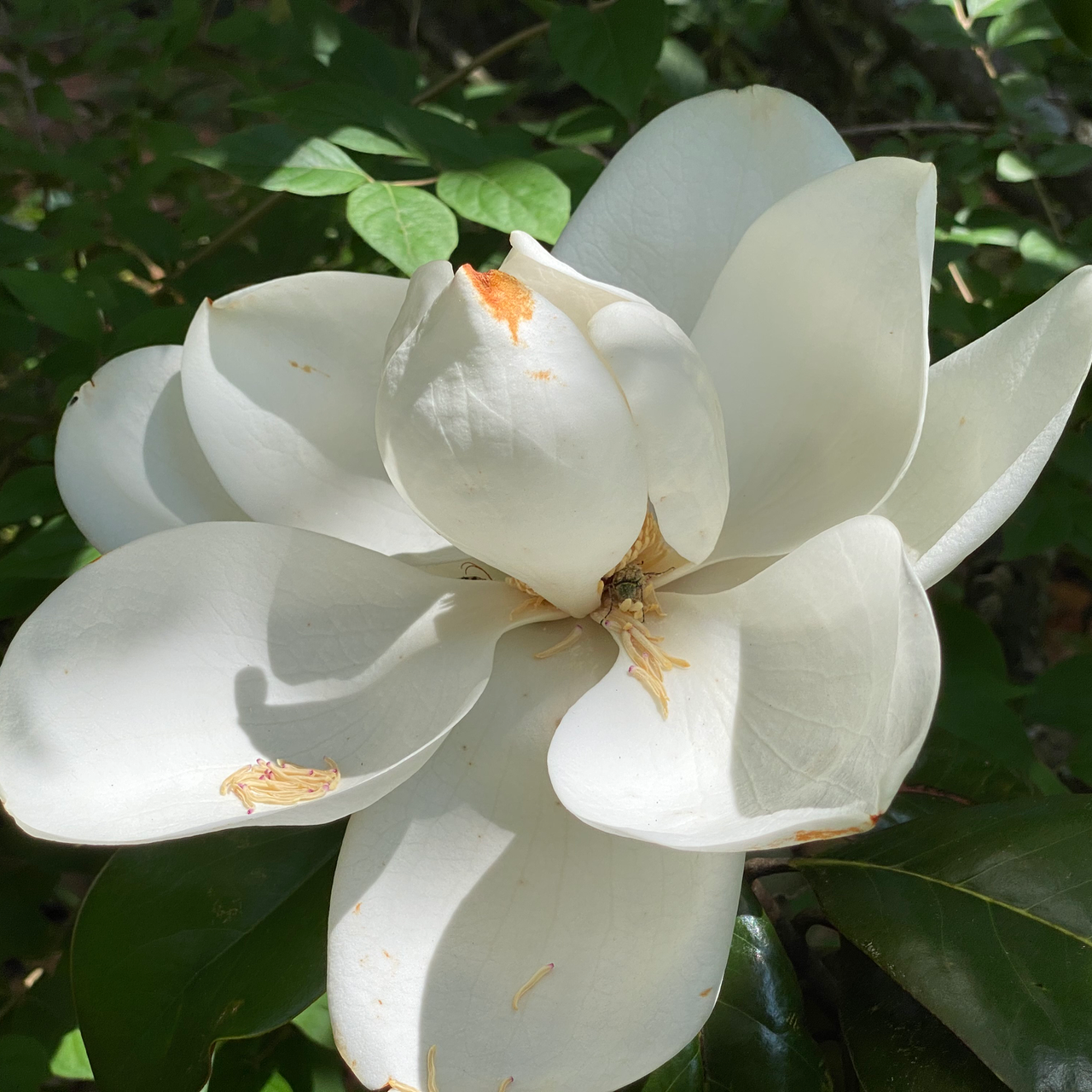The Southern magnolia is a magnificent tree. It is an excellent choice to add variety to a landscape. It provides unique visual contrast that can’t be provided by other trees. Read more to find out about this lovely low maintenance tree.
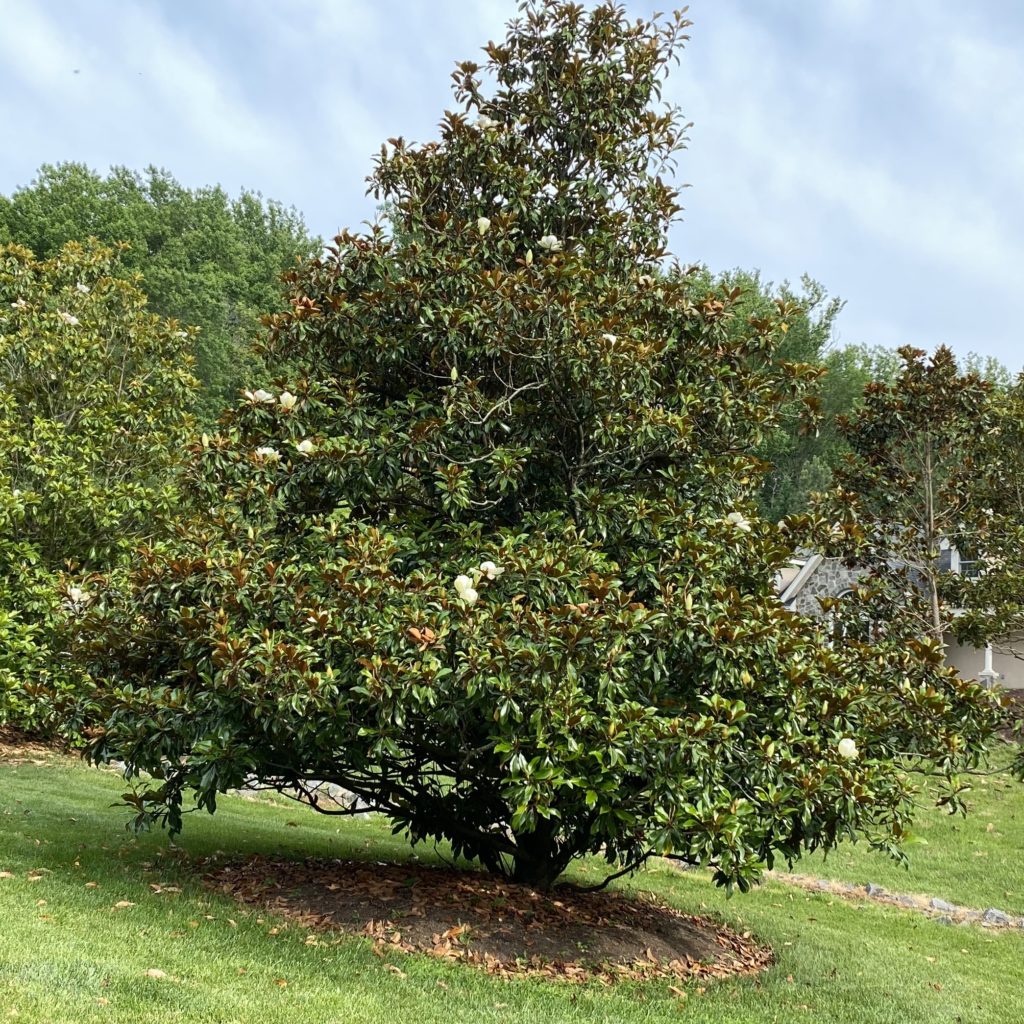
Another Native Species!
The magnolia family (Magnoliaceae) is part of the most primitive angiosperms dating back 130 million years. This species is native to several countries including eastern North America. Guess what? It is native to the southern US from Maryland south and across to Texas! Finally, another native flowering species.
Southern Magnolia Characteristics
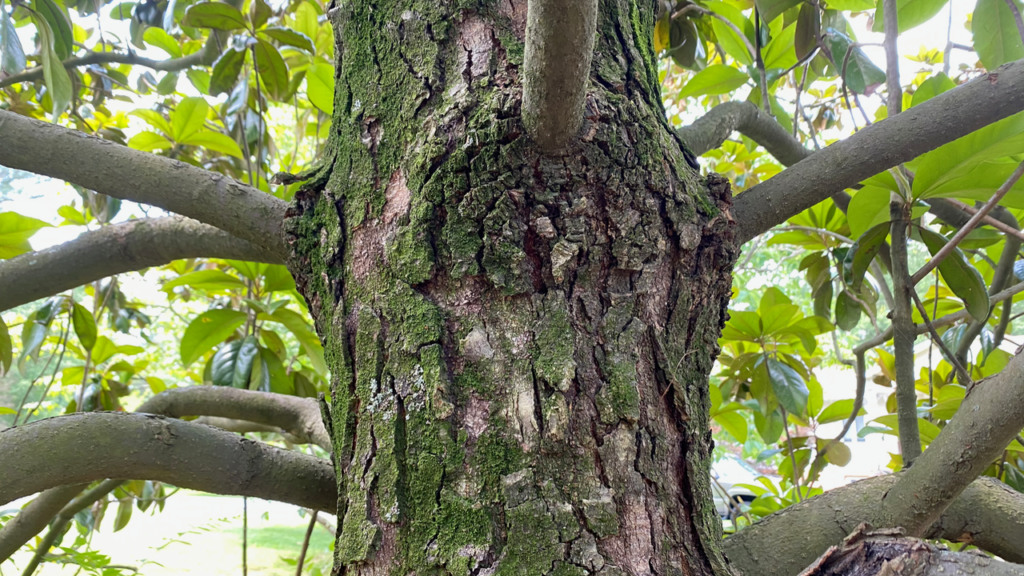
General Tree Info
Growth characteristics depend on the variety; however, most are somewhat conical shaped and taller than they are wide. In optimal conditions they reach 50-90 feet tall. Bark on the trunk is furrowed. In contrast, bark on the branches is smooth. Finally, roots are ropey. They may extend 4 times the width of the canopy. Consequently, mature magnolias maybe difficult to transplant. Southern Magnolia trees tolerate a variety of soil conditions; however it doesn’t tolerate extremes. Varieties differ, so check before planting.
Substantial Leathery Leaves
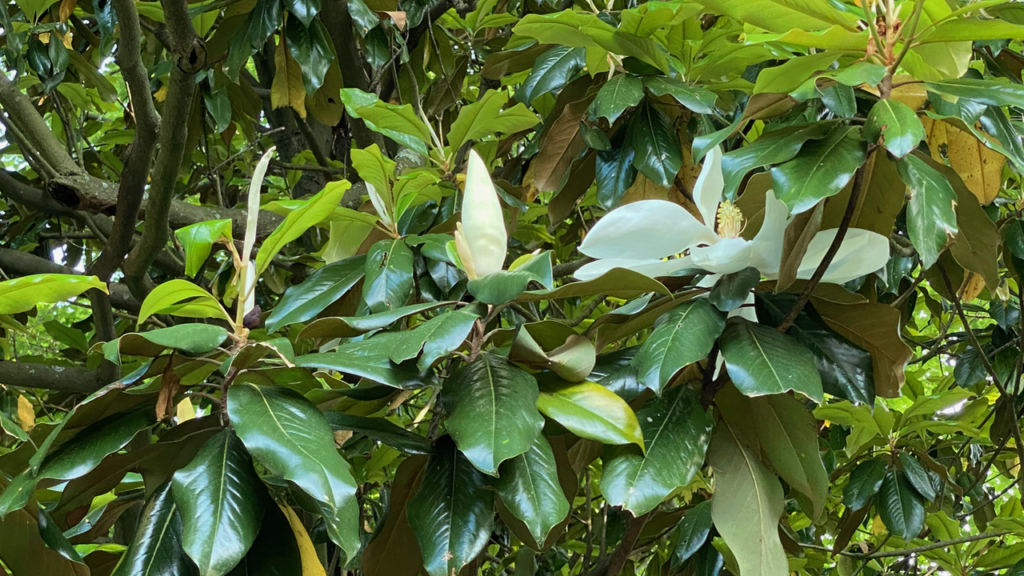
The leaves are simple. There is one per stem. New leaves are a variety of light bright greens. Large, mature leaves are shiny and shades of dark greens. The leaves are stiff and leathery to the touch. Underneath they are a velvety brown. Leaves range in size from 4-7” long and 2-5” wide. Certainly, their size helps provide a dense canopy. Since it is an evergreen, Southern Magnolia trees provide a splash of dark shiny green all year. The technical name for the leaf shape is ovate. This means mostly oval shaped. Leaves drop throughout the year. They are slow to decay. As a result, they make a mess.
Fragrant Magnolia Flowers
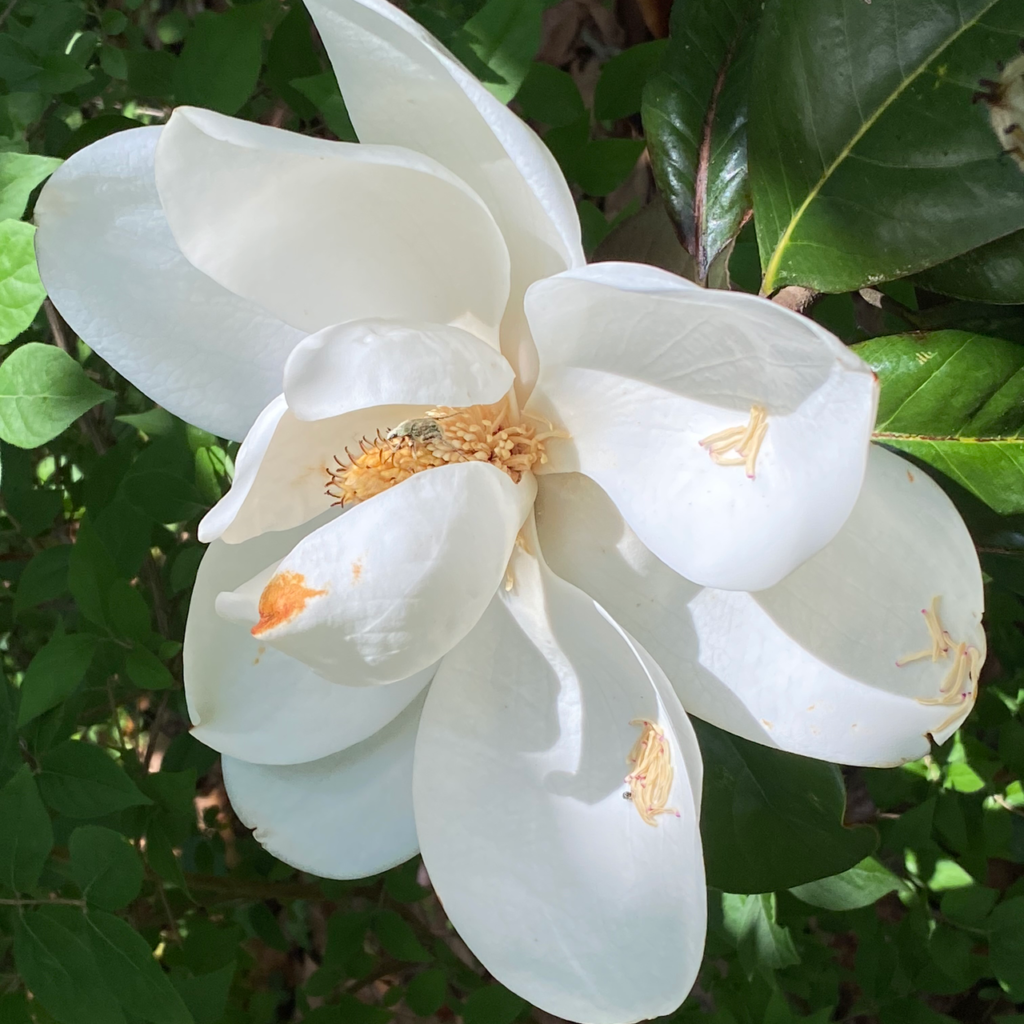
Flowers emerge in the late spring. They are gone by the fall. At any time during this period, there is a sprinkling of flowers on the tree. Male and female flower parts are on the same plant. Flowers are typically 6-8 inches in diameter. The Southern Magnolia’s showy white flowers are beautiful. Usually they have six to twelve large, white tepals. The tepals are velvety, and they are fragrant. You maybe wondering if ‘tepal’ is a typo. No, it is not. Here is the rationale. A sepal is easiest to find on a bud. It is the bud covering. On some flowers it is different than the petals. On magnolias, petals and sepals look the same. As a result, they are called tepals.
Magnolia Fruit – Seeds
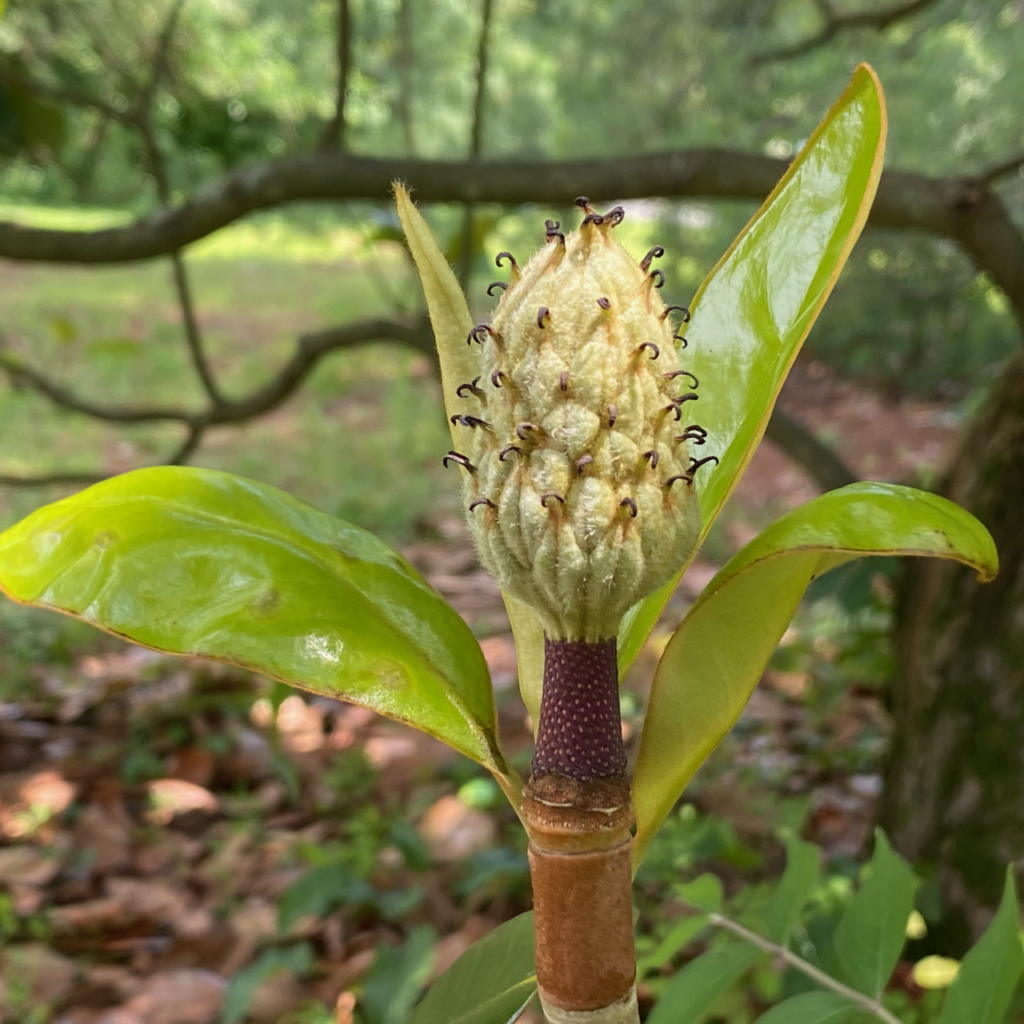
The oval shaped fruit is basically an aggregate of seeds. It starts with a hairy velvety texture. As it ages, the fruit turns brown and produces red seeds. Technically, the photo above emerged just after the flower faded. It is a cluster of spirally arranged carpels and stamens. Eventually the stamens fall off. Below is a photo of an old fruit. The red seeds are gone.
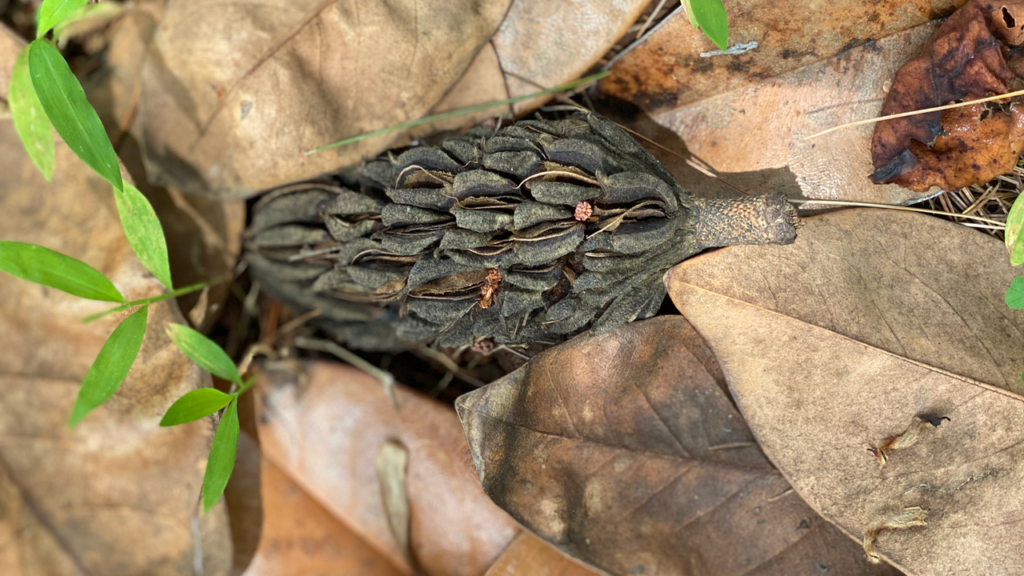
To sum it up, Southern Magnolias are magnificent trees. They require little maintenance. Above all, they add unique color and texture to landscapes. Check out these references if you want to find out more.
First, my go to for reliable tree facts are the USDA Department of Agriculture Fact Sheets.
Second, if you want to find out more about petals, sepals, and tepals check out this reference. This site offers a more in-depth explanation.
Finally, check out this article in Southern Living to find out even more about the quintessential southern beauty.
